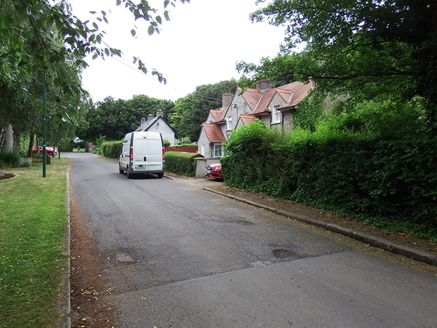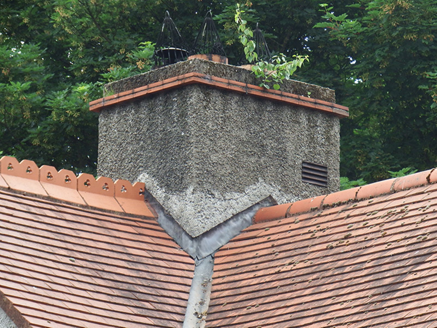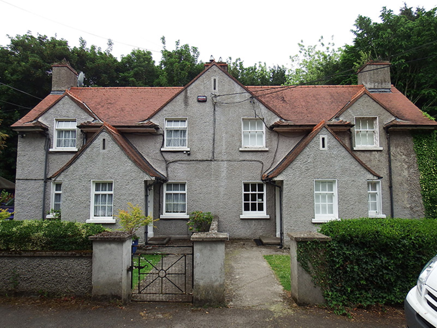Survey Data
Reg No
50130126
Rating
Regional
Categories of Special Interest
Architectural, Social
Original Use
House
In Use As
House
Date
1910 - 1930
Coordinates
315776, 238308
Date Recorded
12/06/2018
Date Updated
--/--/--
Description
Semi-detached pair of three-bay single-storey houses with dormer attics, built c. 1920, with projecting single-storey gabled porches to front (west) elevation and modern two-storey flat-roofed extension to rear; shared gable to centre. Pitched sprocketed Rosemary tiled roof with cockscomb ridge tiles; projecting eaves having replacement uPVC gutters and downpipes; unpainted roughcast rendered chimneystacks to gables and party wall having projecting red clay platband and cowled red clay pots. Unpainted roughcast walling over smooth rendered plinth course. Square-headed window openings, those to attic set within gables, having patent reveals, projecting painted masonry sills, apparently original three-over-six pane timber sliding sash windows to southern house and replacement uPVC to northern house. Blind loop opening to apex of central gable and having smooth-rendered surround. Square-headed doorway to side elevation of each porch, having patent reveals and replacement timber door. Set back from road, with front gardens enclosed by unpainted roughcast dwarf wall with masonry coping with that to north replaced with hedging; smooth-rendered gate piers flanking vehicular entrances to north and south and central pedestrian entrances. Forms part of complex of buildings consisting of similarly styled pair of semi-detached houses to north and Cuilin House to west.
Appraisal
Forming part of the group of buildings that constituted Glasnevin Model Farm (later, Albert College; now part of Dublin City University) and established in 1838, this pleasant pair of semi-detached houses were most likely constructed in the early twentieth century, along with a similarly proportioned pair to the north, as residences for agricultural labourers. The houses, now owned by Dublin City Council, have retained a similar function, with the northern house acting as residence of the head groundskeeper for the nearby Albert College/Hampstead Park, and that to the south in use as the park office. Simply detailed with good proportions and distinguished by attractive detailing, such as the sprocketed roof and Rosemary tiled roof, the cottages are well preserved and contribute to the story of the development of a historically important academic institution in the city.





